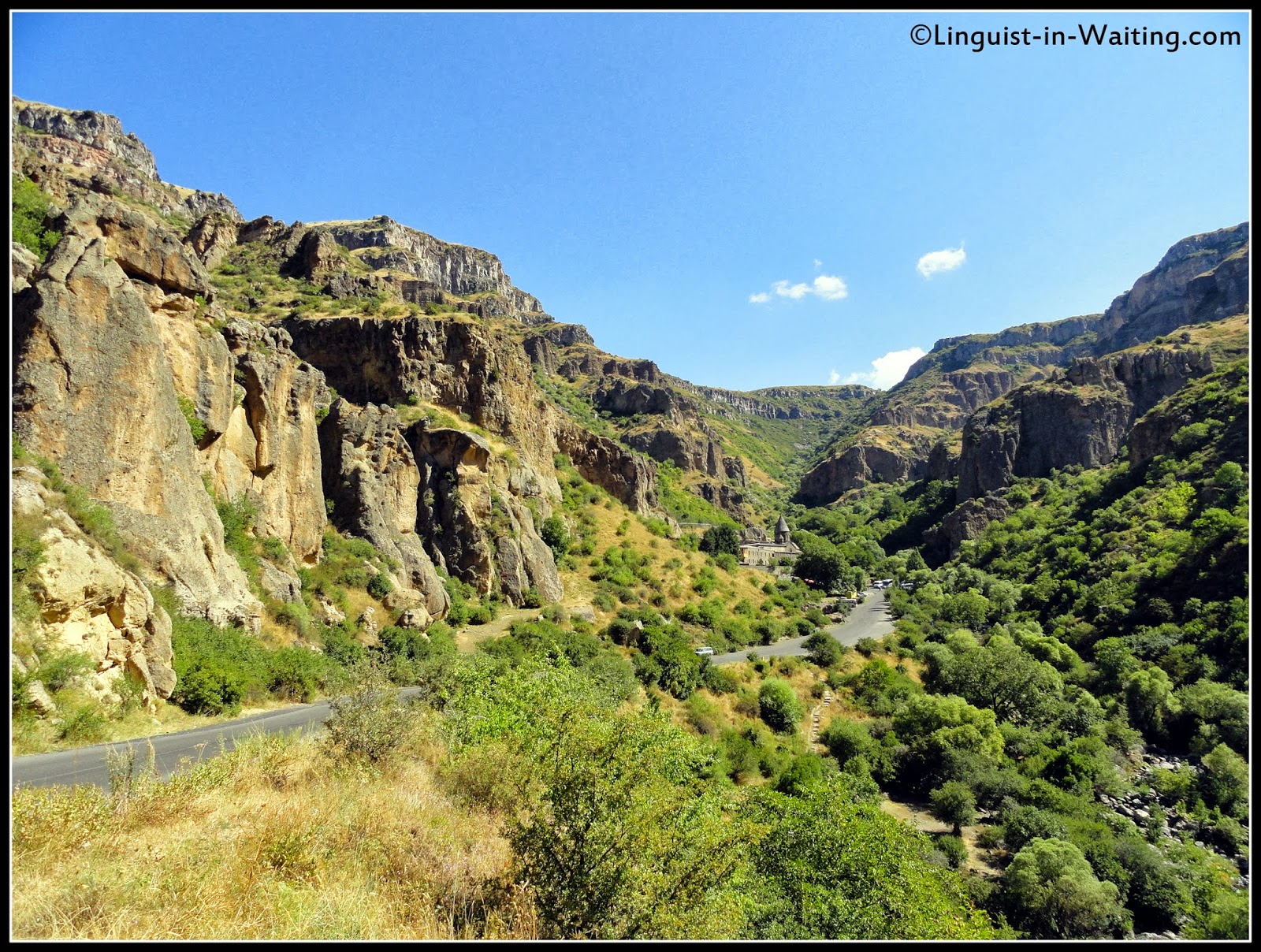
GEGHARD
About one hour drive from Yerevan, you reach a spectacular deadlock surrounded with caves, preserve and river in the bottom of the gorge. And the jewel of this site is Geghard Monastery.
Geghard monastery was one of the secret pilgrimage sites during Pre-Christian times. It is believed that the first Catholicos of all Armenians Gregory the Illuminator founded a monastery at this site that has spring in the cave and named “Cave Monastery” in 4th c. After this little monastery was destroyed by Arabs in 10th c. You can also find many caves around monastery. It believed Gregory lived in one of these caves.
From inscriptions we learn that current monastery is from 13th c. The Orbelian king and the generals Zakarians defended many lands of Armenian kingdom from Seljuk Turks and Geghard monastery was included.
From 13th to 18th cc the Holy Lance, the spear that pierced the crucified Jesus by Roman soldier, was kept in Geghard monastery. The monastery was named Geghardavank “the Spear Monastery” after this reliquary. Currently the spear is in Echmiatsin treasury.
The main church in the complex was built in 1215. Looking carefully you will notice how hard people worked to make it as beautiful as possible. The Ornamented label along the roof edge, pomegranate tree and grapes, doves, lions, eagles and many other figure decorate the walls, dome and tympanum of the church.
The narthex was built in 1215-1225. The details in narthex bring you another example of rock carving incredible technic. These halls were used for meetings, teaching as well as gathering pilgrims and visitor.
Holly spring rock-cut church was carved in 1240s. It was hewn in an ancient cave with water source. All the believers come here to drink a water from the holly spring to be healed and blessed. It has equal-armed cross-shape plan decorated with ornaments and pomegranates.
The second rock-cut church was carved in 1283. It is also has cross-shape plan. And here again you find an amazing carving of animals, flora, ornamented crosses, geometrical figures as well as tree of life and pomegranates on the cupola.